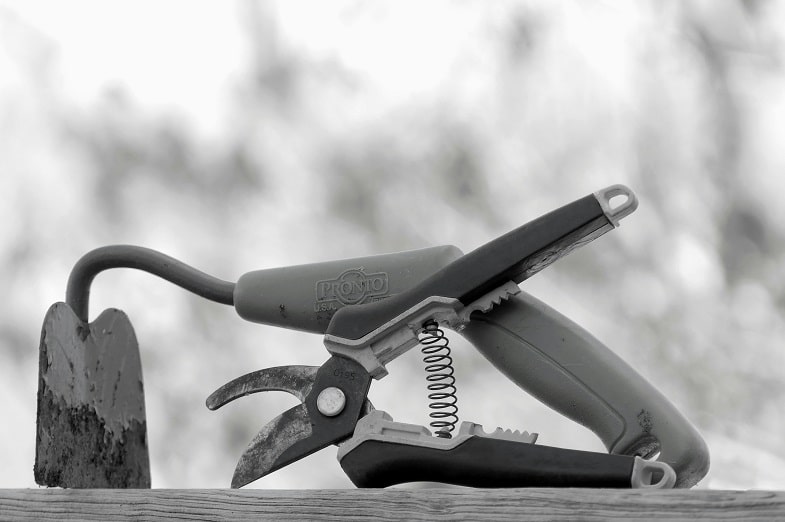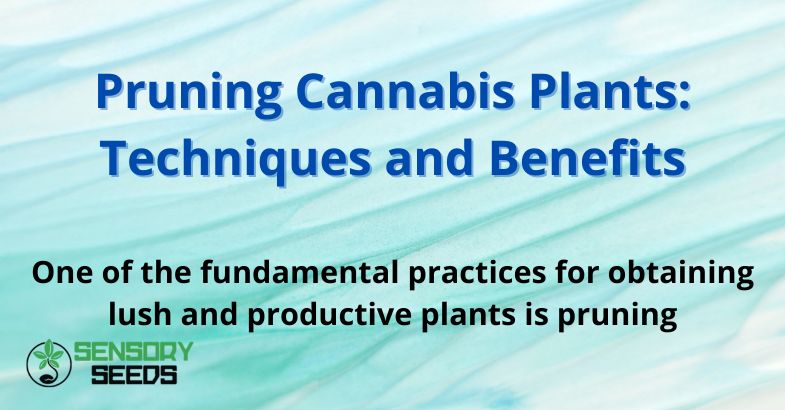Published on: 12/07/2024
One of the fundamental practices for obtaining lush and productive plants is pruning
Pruning is an agricultural practice that involves the removal of parts of the plant, such as branches, leaves, and shoots. This process is crucial in cannabis seeds cultivation as it helps control plant growth, improve air circulation, and increase light penetration. Additionally, proper pruning can promote the production of larger buds.
Pruning cannabis may seem like an intimidating task for beginner growers, but with the right knowledge and techniques, it is possible to achieve remarkable results. There are various pruning techniques, each with its own advantages and specific applications.
This article will explore in detail the different cannabis pruning techniques, the associated benefits, and how these practices can impact the quality and quantity of the harvest.
Read also: Autoflowering pruning: is it safe to proceed with defoliation?
Pruning Techniques
Let’s take a look at the different pruning techniques.
Apical Pruning
The apical pruning, or topping, is one of the most common techniques used by cannabis growers. This technique involves removing the top part of the plant, called the apex, to promote lateral growth. By removing the apex, apical dominance is temporarily interrupted, allowing the lateral branches to develop more fully. This results in a bushier plant with more flowering sites.
To perform apical pruning, you need to identify the plant’s apex and cut it just above a node, where two opposite leaves grow. This should be done during the vegetative stage when the plant is still actively growing. Apical pruning can be repeated several times during the vegetative stage to achieve an even bushier plant.


Fimming
Fimming is a variation of apical pruning and derives its name from the acronym “FIM,” which means “Fuck I Missed.” This technique involves removing about 75% of the plant’s apex, leaving a small portion of the plant tissue. The result is similar to apical pruning but with even more vigorous growth of the lateral branches.
Fimming can be performed in the same way as apical pruning, but it requires a more precise cut to leave part of the apex intact. This technique can be less predictable than apical pruning but can lead to a plant with even more flowering sites.
Lollipopping
Lollipopping is a pruning technique that involves removing the lower branches and leaves of the plant, leaving only the upper canopy. This technique gets its name from the shape the plant takes, similar to a lollipop. Lollipopping is particularly useful for improving air circulation and light penetration in the upper part of the plant, where the largest buds form.
To perform lollipopping, you need to remove all the lower branches and leaves up to about one-third of the plant’s height. This should be done during the vegetative stage but can also be carried out in the early flowering stages to optimize bud production.
Super cropping
Super cropping is a stress training technique that involves the physical manipulation of the plant’s branches to increase their strength and bud production. This technique involves gently bending and slightly crushing the branches so that they break internally without damaging the outer bark. Super cropping stimulates the plant to strengthen the branches and can increase resin and cannabinoid production.
To perform super cropping, you need to identify the branches you want to manipulate and apply slight pressure with your fingers until you hear a faint snap. This should be done during the vegetative stage but can also be performed in the early flowering stages. Super cropping requires attention and practice but can result in a more robust and productive plant.
Benefits of Pruning Cannabis
Let’s look together at the benefits we can obtain from pruning cannabis.
Improved Air Circulation
One of the main benefits of pruning is improved air circulation within the plant’s canopy. Removing excess branches and leaves reduces the risk of mold and fungal diseases. Good air circulation also helps maintain a uniform temperature and reduce humidity, creating a healthier environment for the plants.
Increased Light Penetration
Pruning allows light to penetrate more easily into the plant’s canopy, reaching the lower branches and leaves. This is particularly important for indoor-grown plants, where artificial light can be limited. Better light penetration promotes photosynthesis and supports the growth and development of buds.
Read also: How to protect your plants during drought?


Better Resource Utilization
By removing parts of the plant that do not significantly contribute to bud production, such as lower branches and leaves, the plant can focus its resources on the main branches and more productive buds. This leads to greater efficiency in the use of nutrients and water, improving the quality and quantity of the harvest.
Increased Bud Production
Proper pruning can lead to more abundant and higher-quality bud production. By removing non-productive branches and leaves, the plant can focus its energies on producing larger and denser buds.
Reduced Harvest Time
Pruning can also reduce the time required for harvest. By removing unnecessary branches and leaves, the plant can concentrate its energies on the maturation of the buds, accelerating the flowering process.
Conclusion
Pruning cannabis is an essential practice for obtaining healthy and productive plants. In this article, we have examined the different pruning techniques, each with its own advantages; the choice depends on the specific needs of the grower. However, a mistake in pruning can cause stress to the plant and compromise its growth and production. Therefore, it is advisable to start with simpler pruning techniques and gradually experiment with more advanced techniques as you gain more experience.
Want to learn more and dive into the world of cannabis cultivation? Visit our site Sensoryseeds, where you’ll find excellent seeds and many articles to keep discovering more.









